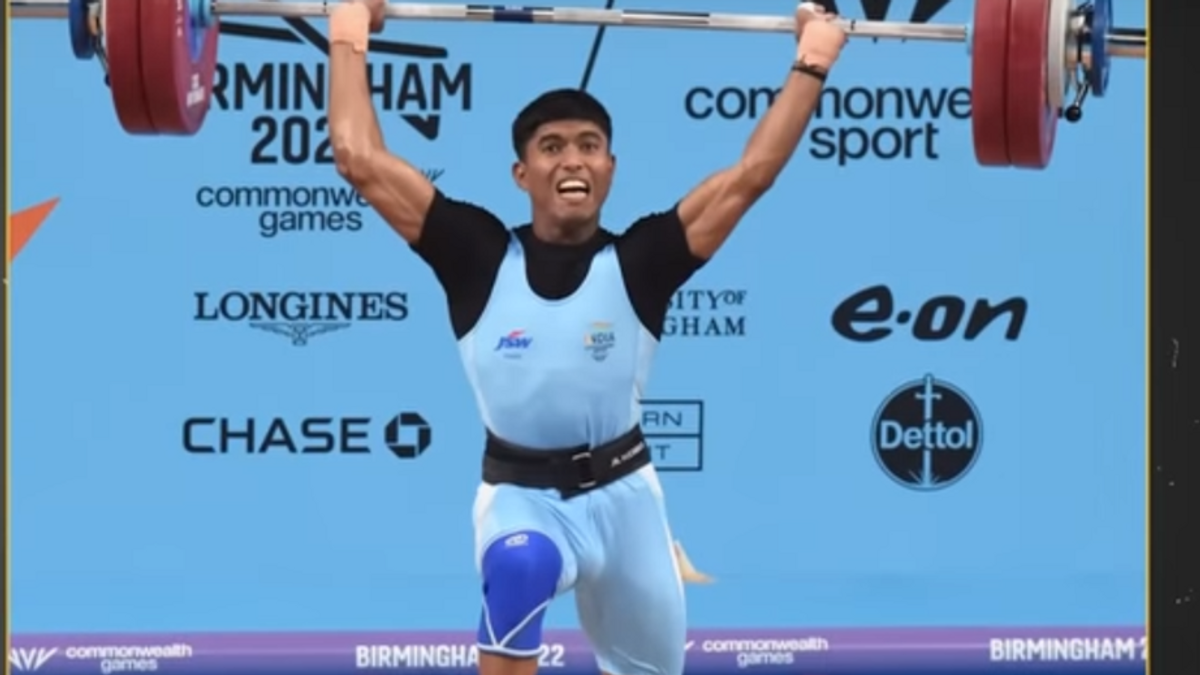
Why Sanket Missed out Gold Medal at CWG2022 Weightlifting?
It is praiseworthy for all Indian weightlifters who earned distinctions of the medals at the ongoing CWG 2022. The efforts of all those athletes, their coaches and Govt of India support as a whole really stand tall for all of them. It was so soothing for all Indian eyes to watch it happening, every moment of it. The entire team of this magazine congratulates all of them. Having said it, it was also agonising to see two of the distinguished weightlifters lay on the floor after sustaining injuries.
Injuries do take place in competitive games esp at the higher levels; and weight-lifting are especially prone to it. Most of such injuries take place either due to faulty techniques of training or during such intense competitions where athletes try to outperform their own capabilities (read “Injury concerns in sports” at page-6 of https://articles.thecounterviews.com/articles/indian-aspirations-olympic-medallion-tokyo-2020-part-2-of-2/). However, the coaches are the most important persons who can suitably advise the athletes both on faulty techniques as well as on the calculated risks taken by them; towards keeping a fine balance between safety and injury-proneness. The calculated risks at such events are taken by the athletes and their coaches while trying to outperform own capabilities for a medal prospects in close competitions. If there are few kilograms of additional weight-lift to secure a medal or for a better colour of medals, the coaches often suggest their athletes to take such risks in the national or own interests. However, if those risks are far beyond their capability, athletes must be prevented from exposing themselves to injuries; or at least be discouraged. One’s entire career depends upon it…both for achievement as well as jeopardising one’s career with nagging injuries.
Sanket Episode
Sanket is a fine weightlifter with plenty of potential. He had done extremely well in the snatch event. No problem in the technique except that couple of inches of additional lifts could be gained through a better coordinated pull by the hands and shoulders through this single action movement. Grips and elbow locks were fine. His ‘Clean & Jerk’ was also good but there appeared some room for improvements. The most obvious problem was the position of the grips. It must be realised that the “Jerk” action of the lift has four components…firstly the spring action of the knees coordinated simultaneously with (second) extension of the ankles while (third) concurrently the hands push the weight bars vertically up. It is only at the culmination of these three actions that the weight bar is pushed up to the maximum possible heights when within split of a second, the fourth action of getting under the weight (either through splits or bending knees) is undertaken.
If the hand grip is vertically above the elbow, the upward force application on the bar (in the 3rd action mentioned above), is optimally vertically up providing maximum lift. Most of the world/Olympic champions are trained with these few inputs of scientific importance during their training and the same is practiced during the championships as could be seen in the figures below: -
In all the above figures at four different championship events, the grip of the champions on the weight-bar can be seen vertically up above the elbow line. The main observation in the position of the grip in ‘clean & jerk’ for Sanket is laterally placed by an inch or two from the vertical white perpendicular line drawn in the figure below. How much it will affect the lift, only an actual trial may reveal. However, force application vertically up versus diagonally/obliquely has implications. Theoretically, oblique force application is comparatively less productive. Should this reduced output be even 2 kg at each grip, it will reduce 4 kg of the lift capacity although the differences could be much higher than the assumed 2 kg. In other words, these lateral grips will reduce the lifting capacity. In the case of Sanket where he lost his gold medal by 2 Kgs, this could very well be the main reason.
This observation to varying degrees seems to be a common issue with most of our weightlifters. In the figures shown above, the grip line can be seen laterally placed to the elbow-vertical lines in the other lifter too. This could be one of the reasons why some of our lifters were failing in the ‘jerk’ lifts; especially of heavier weights though some other factors may also be contributing. Although the above two athletes won Silver/Gold, the lifted weight is nowhere close to the world/Olympics records shown below.
As the Commonwealth championship is already underway, this is no time to correct the grip positions in the participating athletes. However, these along with many other measures suggested in the book (read “Scientific basis of selection and training in Olympics sports” https://www.researchgate.net/publication/353638008_Scientific_Basis_of_Selection_and_Training_for_Olympics_Sports_'The_Indian_Context'?_sg%5B0%5D=2hlVpEy3V9mc-mMdSoPk7cbfHQvYpbJeTEA91F0Dpc3gcirk-2MRXexav7MnKFeD4m3biLDv1Y7I3a6uL7Bv-apVjPq4_RgRPETfHE1n._uucxRlSJh0cOXILFbRDe3uKUIL-fHgFzHVv1BtPYVyFedrF60SdhABJZTIA19nYEZxYAsXG8oq7Y5vAM93Q7w) may be referred to for scientifically based trainings esp in weightlifting. There is no reason why Indian weightlifters cannot be trained adequately for optimal performance, to be medal prospects in the championships at world levels as well. Indian weightlifting training surely needs a relook.




